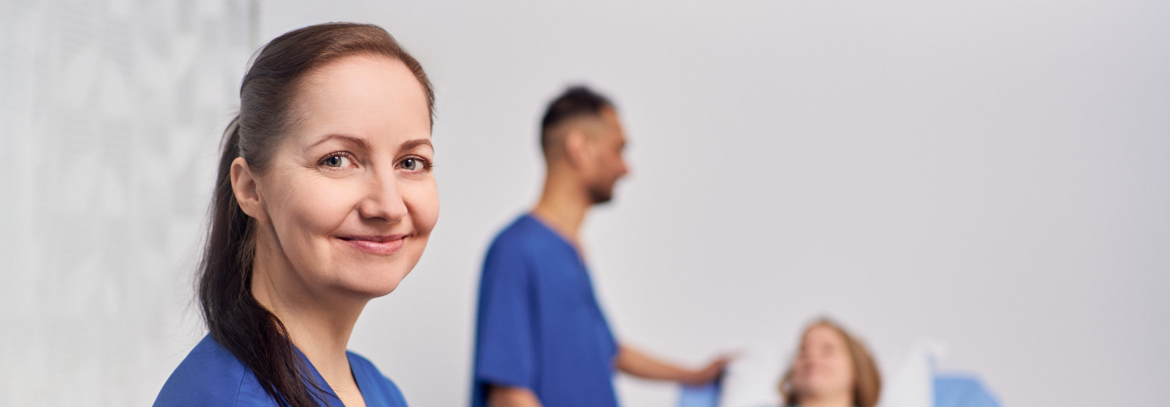The new K Wing of South Karelia Central Hospital has been phased in. The K wing wards utilise auxiliary instrumentation in line with current technology, which allows the browsing and recording of patient data via mobile device immediately while with the patient.
When the new Wing K was being phased in, smart phones together with their various functions were introduced at the wards in order to optimise the use of resources and to allow the professionals to have continuous knowledge of the patient’s overall situation. The smart phones include a number of applications developed for various purposes, such as point-of-care documentation, monitor alarms and patient calls.
“For the staff, moving the wards to new premises in the K Wing and simultaneously phasing in mobile-aided action models together with their new data terminals meant a big effort, which was made possible by the supplier’s on-site training and support tailored to the needs of the customer,” says Mika Mitikka, IT Service Manager at the South Karelia Social and Health Care District (Eksote).
The wireless aspect gives more time to observe the patient’s condition
Developed by Medanets, mobile point-of-care documentation is a solution that is now accessed not only by the K Wing, but by 21 other Finnish hospitals as well. Through this wireless solution, the care staff is able to record patient data, such as physiological observation values, immediately while with the patient. In the K Wing, the data is transferred directly into the Effica Electronic Health Record accessed by the wing, whereby there is no longer any need for manual data documentation.
Once accepted by the nurse, the values measured by the patient monitors move along into the patient data system through the app in the same way. In addition to recording patient data, it is possible to browse wireless data in the patient room, whereby the care staff has immediate access to a general picture of the patient’s condition.
“Point-of-care mobile documentation not only improves patient safety, but also allows the staff to focus more on caring for the patient while the recording and browsing of patient data runs in the background,” observes Mr. Mitikka.
The possibility of collecting and gaining access to patient data with a single click cuts down on the care staff walking back and forth between the patient room and the office and spending time on the computer. This is directly proportional to the increasing amount of time spent with the patient. During the first week of phasing in alone, more than 7,500 mobile documentation entries were made in the K Wing, which means time savings of more than two hours per ward daily.
Detecting the patient’s deteriorating condition in time
The mobile connection together with the patient data system and the time savings this brings allow the patient’s condition to be monitored with increasing meticulousness. Through the Medanets solution, the observation values measured from the patient can additionally be given an automated risk score, which helps to identify patients whose condition is acutely deteriorating. This is important especially when the patient’s deteriorating condition is not visible otherwise.
The total score indicating the patient’s risk category corresponds with clinical measures, such as alerting the medical team, which are determined by the hospital and proposed to the caretaker via the mobile solution. After rapid detection, the treatment needed by the patient can be started immediately.
